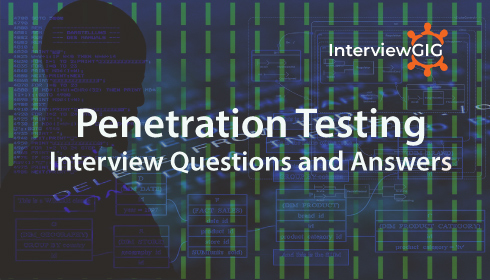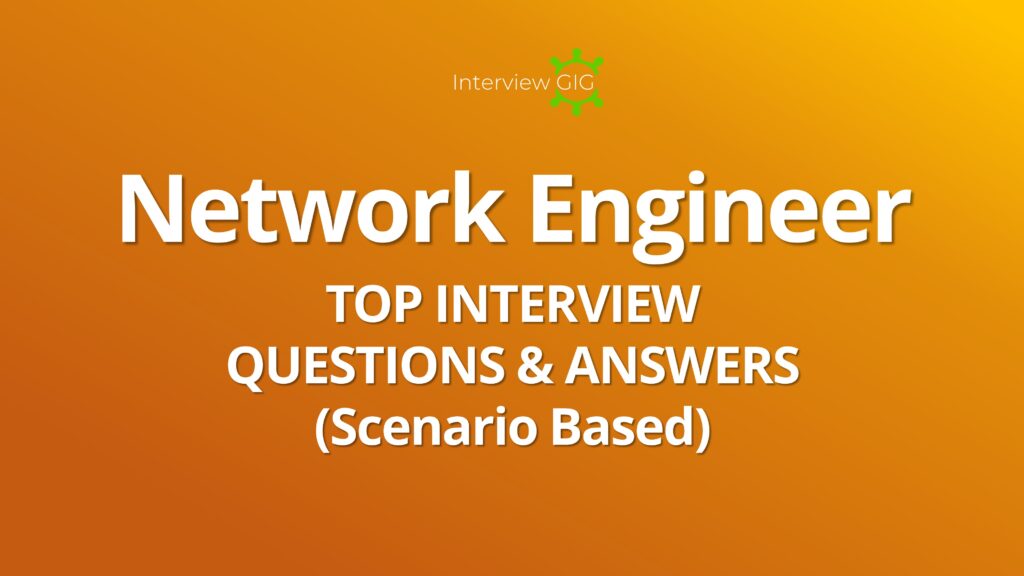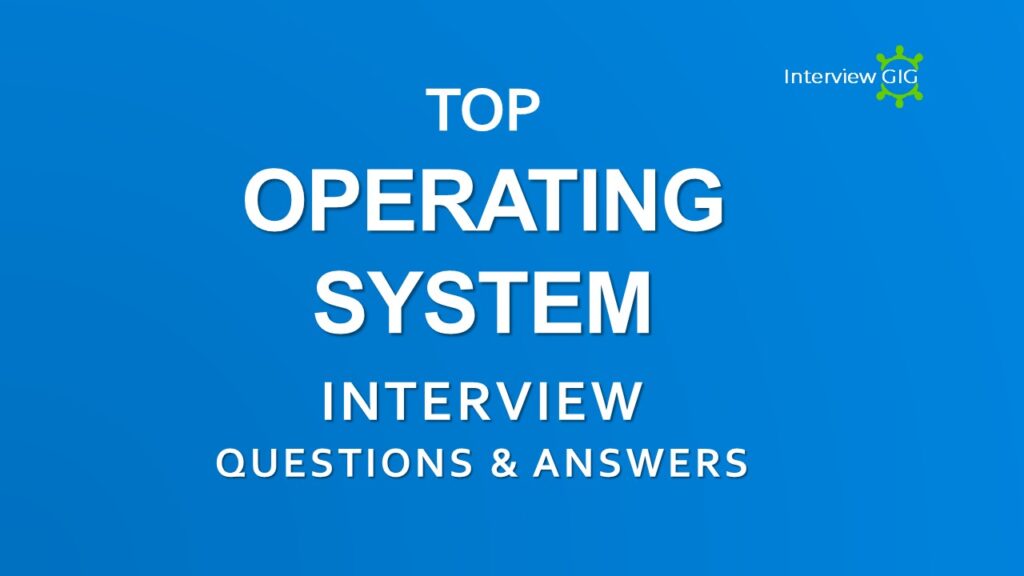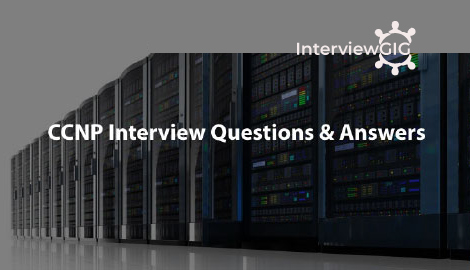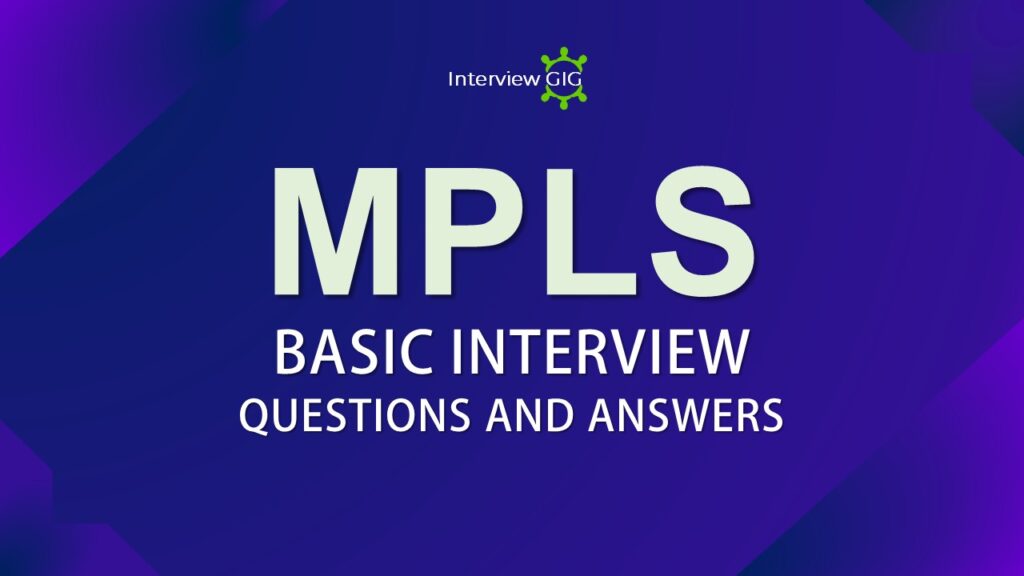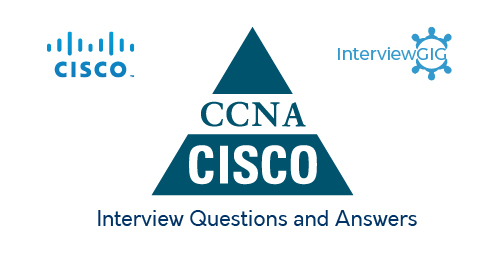What is Network?
A network is a group of 2 or a lot of computer systems connected along and Sharing information or data. the web could be a global network of networks.
What is Segment?
A segment could be a cable between any two stations or network devices, or between any station and network device.
What is a Node?
Node referred as 2 or a lot of computers ar connected directly by a fiber or the other cable. A node is a point wherever a connection established. it’s a network element that is used to send, receive and forward the electronic info.
What is OSI model?
OSI (Open Systems Interconnection) model was created by the international organization for Standardization (ISO), a world standard-setting body. it absolutely was designed to be a reference model for describing the functions of a communication system. it has seven layers, with every layer describing a special function of data traveling through a network.
- Application Layer
- Presentation Layer
- Session Layer
- Transport Layer
- Network Layer
- Datalink Layer
- Physical Layer
What are the different types of Computer Networks?
Thera are several types of networks
- PAN -Personal area Network or HAN (Home area network)
- LAN-Local area network
- MAN-metropolitan area network
- WAN-wide area network
- And other different networks based on their main purpose are:
- SAN-Storage are network
- VPN-virtual private network
- EPN-Enterprise Private network
What is the Network topology? And What are the different types of topology?
Network topology is an arrangement of different devices of a network. It is used in data transmission and formation of interconnection of Nodes and links with each other. Network topology refers to the physical or logical layout of a network.
There are two types of Network topologies:
Physical Topology: physical layout of the connected devices and nodes
Logical Topology: the pattern of data transfer between network nodes.
Both Physical and logical Network topologies can be categorized into many topologies
Point to Point topology: It is the simplest and the earliest type of topology that links two end points. This has been used by the telephonic systems and is the oldest type of network topology.
Bus topology: It is use of a single main cable which has terminators on both ends. All the other nodes like workstations, peripherals, etc. are connected to this main cable.
Mesh topology: In this type of arrangement every node participating in the network is connected to every other node.
Star topology: It is all the devices are connected to a single hub through a cable. This hub is the central node and all others nodes are connected to the central node.
Ring topology: Ring topologies are similar to bus topologies, except they transmit in one direction only from station to station.
Tree topology: It is also known as the hierarchical topology. It can be considered as the combination of linear bus and star topologies as it contains systems with star topology connected to a linear bus main cable.
Hybrid topology: It is basically a combination of any two or more different types of network topologies
Daisy chain: Daisy chain is a networking term that describes one way that network devices can connect. It allows the workstation to be connected in such a way that the data which has to be sent is transmitted in a sequence.
What is NIC?
NIC (Network Interface Card) is additionally mentioned as an ethernet card and network adapter. it’s a growth card that allows a computer to connect to a network; adore a home network, or the web using a coax with an RJ-45 connection.
What is Protocol?
A protocol is a standard used to outline define of exchanging data over a computer network, such as local area network, Internet, Intranet, etc.
What is IP?
IP stand for Internet Protocol. It’s the set of rules that govern how packets are transmitted over a network.
What is TCP?
TCP (Transmission management Protocol) is a connection-oriented protocol and offers end-to-end packet delivery. It acts as back bone for connection.
What is FTP?
File Transfer Protocol(FTP) was one amongst the primary internet services developed and it permits users to move files from one computer to a different. using the FTP program, a user will logon to a remote computer, browse through its files, and either download or transfer files (if the remote computer allows).
What is Telnet?
Telnet is a network text-only protocol that has bidirectional interactive communications facility using virtual terminal connection.
What is Gopher?
Gopher was a text-based protocol that was used on the web on the first days, currently replaced by advanced search engines such as Google.
What is VERONICA?
VERONICA is gopher-based resource. It allows access to the information resource stored on gopher’s servers.
What is IP address?
An IP Address is a distinctive variety (unique number) assigned to every and each device that is participating in a network. a device could be a laptop, a printer, or the rest that connects to either a local network or the net. All computers connected to the net use IP Addresses once communicating with each other.
What is MAC address?
MAC (Media Access Control) address is a 48-bit address that’s used for communication between 2 hosts in AN ethernet atmosphere. it’s a hardware address, which implies that it’s keep within the firmware of the network card.
What is IPv4?
IPv4(Internet Protocol Version 4) is that the most generally used version of the internet Protocol. it’s the fourth version within the development of the internet Protocol (IP) and also the 1st version of the protocol to be wide deployed.
What is IPv6?
IPv6 is that the new IP address that has been invented to use on the internet these days. as a result of IPv4 only provides four billion possible unique IP addresses, IPv6 was developed to expand this quantity and supply alternative, higher updates to the service as well. IPv6 uses what’s referred to as a 128-Bit format, that means that the entire number of unique IP addresses using the IPv6 format is equal to 2^128 addresses, about 300 and forty trillion trillion addresses.
What is VoIP?
VoIP (Voice over web Protocal) is additionally stated as IP telephone, web telephone, and internet line. the data is distributed digitally, using the internet Protocol (IP) rather than analog telephone lines
What is default gateway?
A default gateway is used for multiple devices on constant network to communicate with {each alternative and with those in other networks, transferring requests for info. One key method they’ll be used is for a browser requesting info from the internet. The request leaves the local network from a browser on a user’s computer or device via a default gateway, to the internet.
What is Ethernet?
Ethernet is that the most well-liked manner for a local area network (LAN) or wide area network (WAN) to attach to devices, reminiscent of computers, printers and servers that need a connection to the internet.
What is PoE?
PoE (Power over Ethernet) is a technology for wired LAN local area networks (LANs) that enables the electrical current necessary for the operation of every device to be carried by the data cables rather than by power cords.
What is UDP?
UDP (User data gram Protocol) is another set of rules used once sending information between computers locally or over the internet. it’s used as an alternative to transmission control protocol and often in conjunction with IP.
What is subnet?
Subnet mask is a mask used to verify what subnet IP address belongs to. an IP address has 2 components, the network address and therefore the host address.
What is Subnetting?
Subnetting is that the strategy used to partition one physical network into more than one smaller logical sub-networks (subnets).
What is VLSM?
VLSM (Variable Length subnet Masking) is a technique that enables network administrators to divide an IP address space into subnets of various sizes, in contrast to simple same-size Subnetting.
What is SNAP?
SNAP (Sub network Access Protocol) is used within the IEEE 802.2 LLC (Logical Link Control) protocol as a mechanism for multiplexing a lot of protocols than is distinguished by the 8bit 802.2 SAP (Service Access Point) fields.
What is Classless Inter Domain Routing?
Using CIDR a Subnet Mask is allotted to the IP address. This mask indicated the length of the Network and Subnet half. The subnet mask is expresses either in binary, decimal or ‘/x’ notation. The meaning is always the same.
What is HTTP and what port does it use?
HTTP (Hyper Text Transfer Protocol) is responsible for web content. Many web pages are using HTTP to transmit the web content and allow the display and navigation of Hypertext. Port 80 is used.
What is HTTPs?
HTTPs (Hyper Text Transfer Protocol secure) is used for secure communication over a computer network. HTTPS provides authentication of websites which prevents unwanted attacks.
What is VRRP?
The Virtual Router Redundancy Protocol (VRRP) is a computer networking protocol that provides for automatic assignment of available internet Protocol (IP) routers to taking part hosts.
What is GLBP?
GLBP (Gateway Load balancing Protocol) feature provides automatic router backup for ip hosts organized with one default gateway on an IEEE 802.3 LAN.
What is ICMP?
ICMP (Internet Control Message Protocol) is a network layer protocol of the TCP/IP suite used by hosts and gateways to send notification of datagram issues back to the sender.
What is LILO?
LILO (Linux Boot Loader) can load the MBR (Master Boot Record) into the memory and tell the system that partition and disk drive to boot from.
What is DHCP?
DHCP (Dynamic Host Configuration Protocol) is a client/server protocol that automatically provides an Internet Protocol (IP) host with its ip address and different related configuration info such as the subnet mask and default gateway.
What is RIP?
RIP (Routing information Protocol) is one in every of a family of IP Routing protocols and is an Interior Gateway Protocol (IGP) designed to distribute routing info among an Autonomous System (AS).
What is APIPA?
APIPA (Automatic Private IP Addressing) is a feature in Windows operating systems that permits computers to automatically self-configure an IP address and subnet mask once their DHCP server isn’t accessible. The IP address range for APIPA is 169.254.0.1-169.254.255.254, with the subnet mask of 255.255.0.0.
What is FQDN?
FQDN (Fully Qualified domain name) is a complete and unambiguous domain name that specifies an explicit location for an object in a Domain Name System (DNS) hierarchy. It specifies all domain levels, as well as the top-level domain and the root zone.
What is NETBIOS and NETBEUI?
NETBIOS is a programming interface that permits I/O requests to be sent to and received from a remote computer and it hides the networking hardware from applications.
NETBEUI is NetBIOS extended user interface. A transport protocol designed by Microsoft and IBM for the use on tiny subnets.
What is Beaconing?
The process that permits a network to self-repair networks issues. The stations on the network notify the opposite stations on the ring once they aren’t receiving the transmissions. Beaconing is used in Token ring and FDDI networks.
What is Bandwidth?
Every line has an upper limit and a lower limit on the frequency of signals it can carry. This limited range is called the bandwidth.
What is 802.3?
802.3 is a standard specification for Ethernet, a method of physical communication in a local area network (LAN), which is maintained by the IEEE.
For More:
What are the Ethernet IEEE 802.3 standards?
The most important 802.3 standards are:
10Base-T (IEEE 802.3): It is 10 Mbps with category 3 unshielded twisted pair (UTP) wiring, up to 100 meters long.
100Base-TX (IEEE 802.3u): It is known as Fast Ethernet, uses category 5, 5E, or 6 UTP wiring, up to 100 meters long.
100Base-FX (IEEE 802.3u): It is a version of Fast Ethernet that uses multi-mode optical fiber. Up to 412 meters long.
1000Base-CX (IEEE 802.3z): It is uses copper twisted-pair cabling. Up to 25 meters long.
1000Base-T (IEEE 802.3ab): It is Gigabit Ethernet that uses Category 5 UTP wiring. Up to 100 meters long.
1000Base-SX (IEEE 802.3z): It is 1 Gigabit Ethernet running over multimode fiber-optic cable.
1000Base-LX (IEEE 802.3z): It is 1 Gigabit Ethernet running over single-mode fiber.
10GBase-T (802.3.an): It is 10 Gbps connections over category 5e, 6, and 7 UTP cables. (Reference: studyCCNA).
What is NBASE-T?
NBASE-T technology defines a brand-new form of ethernet that boosts that reinforces the speed of installed primarily based twisted-pair cabling well beyond the cable’s designed limit of one Gigabit per second (Gbps) for distances up to a hundred meters.
Can you explain MGBASE-T?
This cluster of leading technology vendors has formed the Multi-Rate Gigabit ethernet Base-T (MGBASE-T) alliance for the continued success and expansion of the ethernet technology. The addition of the two.5G and 5G ethernet link protocol speeds can enable cost-effective scaling of network bandwidth to enterprise networks.
What is Cloud networking?
Cloud networking (and Cloud primarily based networking) is a term describing the access of networking resources from a centralized third-party supplier using Wide area Networking (WAN) or Internet-based access technologies. Cloud networking is related the idea of cloud computing, during which centralized computing resources clients shared for customers or purchasers.
What is Firewall?
A firewall is a network security device that monitors incoming and outgoing network traffic and decides whether or not to allow or block specific traffic supported a defined set of security rules.
What is NGFW?
NGFW (Next Generation Firewall) is a deep-packet scrutiny firewall that moves beyond port/protocol inspection and block to feature application-level inspection, intrusion prevention, and transfer intelligence from outside the firewall.
Can you explain OSI Layers?
Application Layer: It provides an interface between computer application and network. Application layer is the layer where network software such as spreadsheet, word processor, FTP, TFTP, DNS, http and etc.
Presentation Layer: Presentation layer concern with syntax and semantics of the information exchanged between two systems. It deals the following:
Encryption: For privacy on sensitive data’s, we need an encryption/ decryption process. It means that the sender transforms the original information to another form and sends the resulting message out over the network. Decryption reverses the original process to transform the message back to its original form.
Compression :It reduces the number of bits to be transmitted, the transmission may contain text, audio and video.
Session Layer: It provides various services, including tracking the number of bytes that each end of the session has acknowledged receiving from the other end of the session. This session layer allows applications functioning on devices to establish, manage, and terminate a dialog through a network.
Transport Layer: the transport layer of the OSI model, offers end-to-end communication between end devices through a network. Depending on the application, the transport layer either offers reliable, connection-oriented or connectionless, best-effort communications.
Network Layer: Network layer is one of the most active layers in the OSI model. This is the layer where telecommunication services are active and router activities are defined. On this layer, data in segments are divided into packages and gradually transferred to the lower layer.
Datalink Layer: The Data Link layer deals with how the data if formatted (Frames), the data link layer also commonly adds error detection and correction by the use of a CRC bit.
Physical Layer: The interface between the medium and the device. The layer transmits bits (ones and zeros) and defines how the data is transmitted over the network, what control signals are used and the mechanical properties of the network.
or
In simple words.
Application Layer: Data in the form of Messages.
Presentation Layer: Data in the form of segments.
Session Layer: Data in the form of segments.
Transport Layer: Date in the form of segments.
Network Layer: Data in the form of Packets.
Datalink Layer: Data in the form of Frames.
Physical Layer: Data in the form of Bits.
What is SAN?
SAN stands for Storage Area Network. A SAN is a special, high-speed network used to connect storage devices, like disk arrays and tape libraries, to enterprise servers. In contrast with direct-attached storage (DAS), SANs separate the data storage function from the data processing function, allowing greater storage flexibility and utilization, and easier central management
What is VPN?
VPN stands for Virtual Private Network. A VPN is a private network that uses a public network (usually the Internet) to connect remote sites or users together. Instead of using a dedicated, real-world connection such as leased line, a VPN uses “virtual” connections routed through the Internet from the company’s private network to the remote site or employee.
What is EPN?
EPN stands for Enterprise Private Network. It is a computer network built by a business to interconnect its various company sites (such as production sites, offices and shops) in order to share computer resources.
What is netstat?
netstat is a command-line utility program that provides information about the current TCP/IP settings of a connection.
What is a peer-peer process?
The processes on each machine that communicate at a given layer are called the peer-peer process.
What is ipconfig?
Ipconfig stands for Internet Protocol Configuration. It is used on Microsoft Windows to view and configure the network interface.
What is ifconfig?
Ifconfig stands for Interface Configuration. It is used on Linux, Mac, and UNIX operating systems.
What is NVT?
NVT stands for Network Virtual Terminal. It is a subset of the TELNET protocol. Communication is established using the TCP/IP protocols and communication is based on a set of facilities known as a Network Virtual Terminal.
What is AYT?
AYT stands for Are you there. It is useful to request identification of the device and check ahead for NVT compatible devices.
What are the Network Cables?
- Coaxial cables
- Twisted pair cables
- STP (shielded twisted pair) cables
- Optical Fiber cables and more
What are uses of the Hamming code?
some of the common applications of using Hemming code:
- PlasmaCAM
- Modems
- Satellites
- Shielding wire
- Open connectors
- Embedded Processor
- Computer Memory
What is Round Trip Time?
Round Trip Time (RTT) is the time taken to send a message from one end of a network to the other and back.
What is 127.0.0.1 and localhost?
Localhost is the standard hostname given to the machine, and it is represented by the IP address 127.0.0.1.
What is MDI?
MDI stands for Medium dependent interface. It is also known as an uplink port, is an Ethernet port connection typically used on the NIC or Integrated NIC port on a PC.
What is Auto MDIX?
Auto-MDIX is standing for Automatic medium-dependent interface crossover. Its function is to detect the Ethernet cable type on every port on the switch automatically.
What is SOHO network?
SOHO network or also termed as Small Office Home Office Network is mainly referred to a business category involving a small number of workers usually.
What is NOS?
NOS stands for Network operating System. It is a computer operating system that is designed primarily to support workstation, personal computer, and, in some instances, older terminal that are connected on a local area network (LAN).
What is WPA2?
WAP2 stands for Wi-Fi Protected Access 2. It is a network security technology commonly used on Wi-Fi wireless networks.
What is an RFC?
RFC stands for “Request for Comments”. The Requests for comments are a series of documents about the Internet and the communications protocols surrounding it.
What is Beaconing?
It is a technique used on token-passing networks for monitoring the status of the token-passing process.
What is IDEA?
IDEA stands for International Data Encryption Algorithm. It is an encryption algorithm. It uses a block cipher with a 128-bit key, and is generally considered to be very secure.
How to change a computer DNS address on Windows 10?
- Open the Control Panel.
- Click View network status and tasks
- Click Change adapter settings on the left portion of the window.
- Double-click the icon for the Internet connection you’re using.
- Click the Properties button.
- Click and highlight Internet Protocol Version 4 (TCP/IPv4) and click Properties.
- If not already selected, select the Use the following DNS server addresses option.
- Enter the new DNS addresses and click OK and close out of all other windows.
